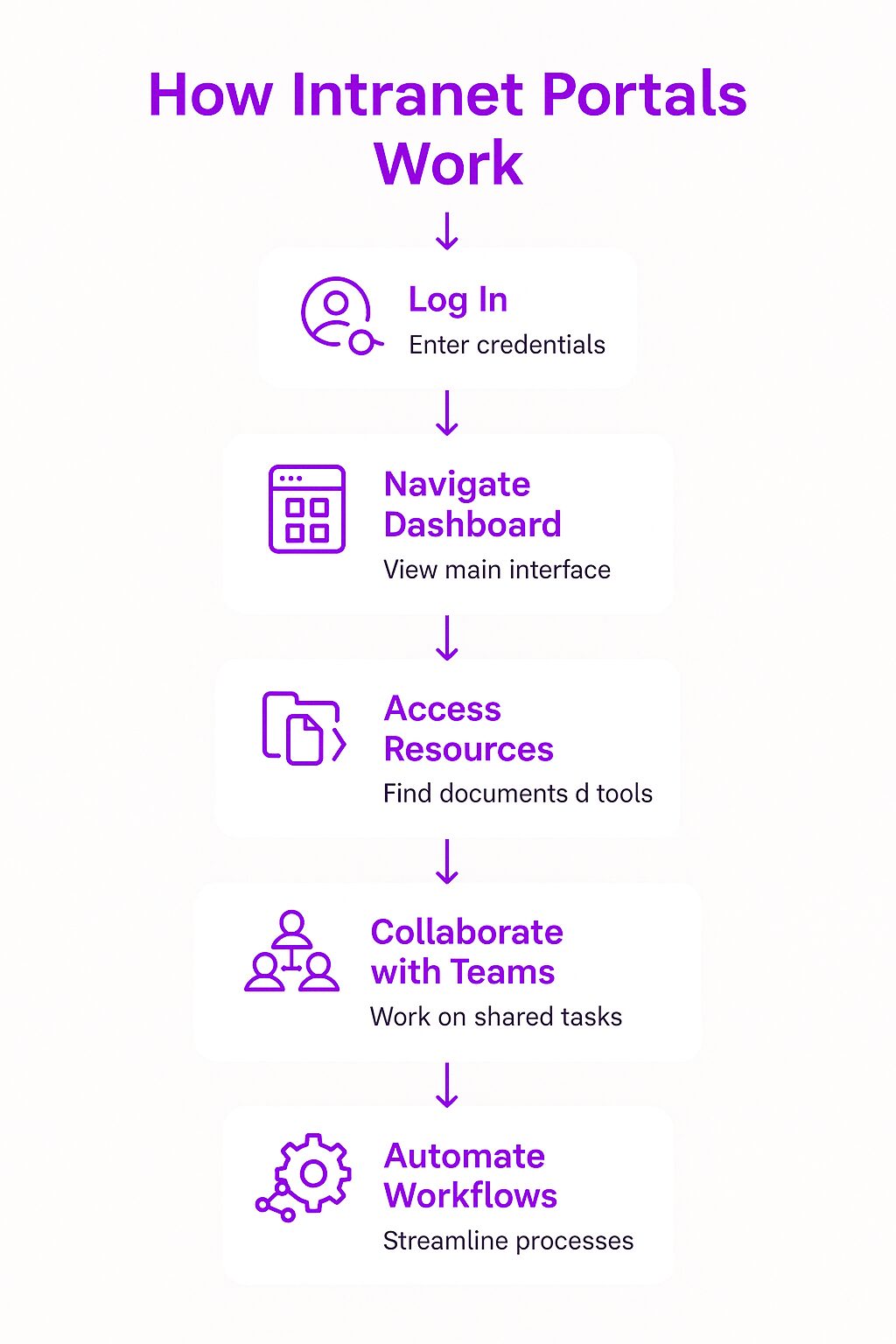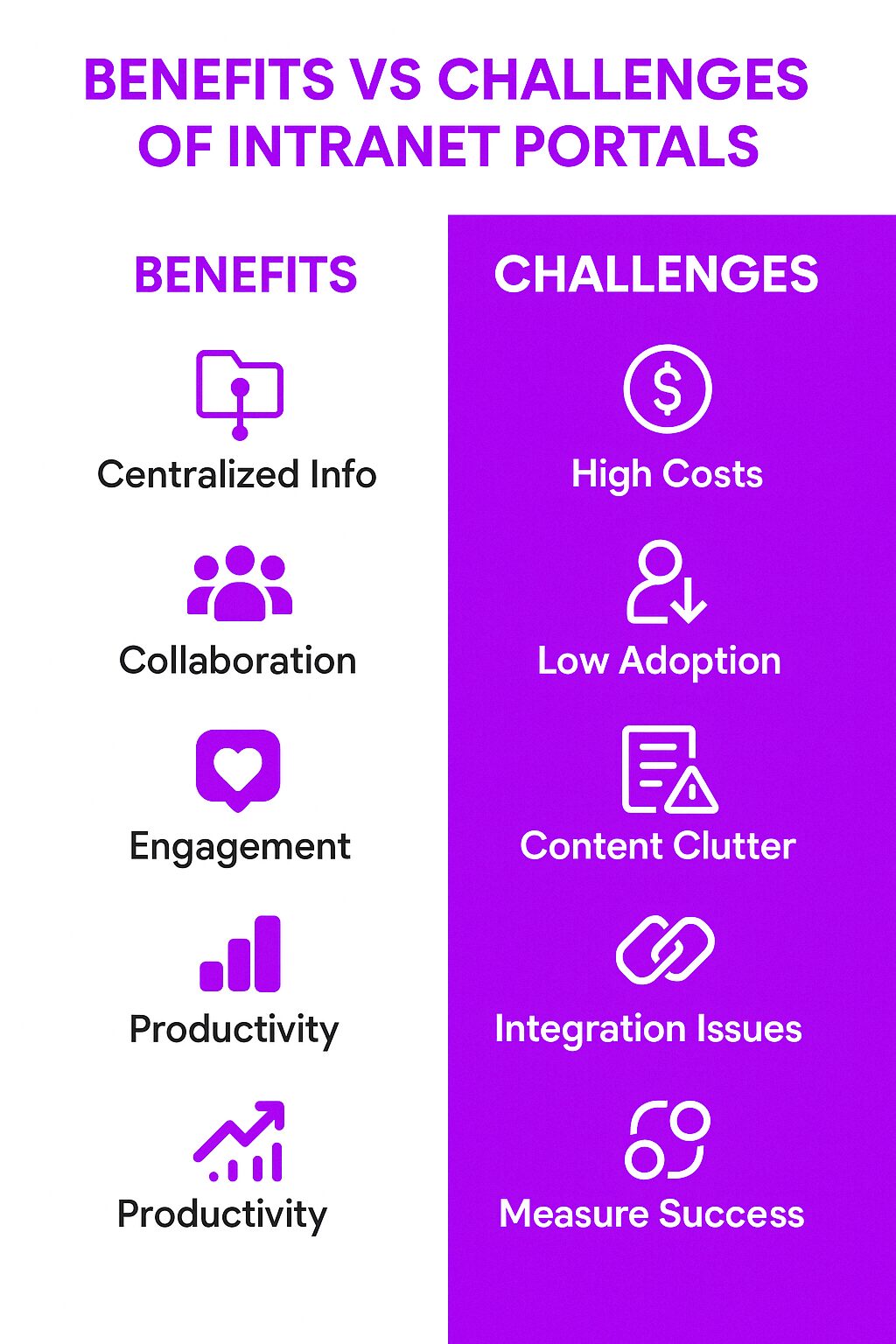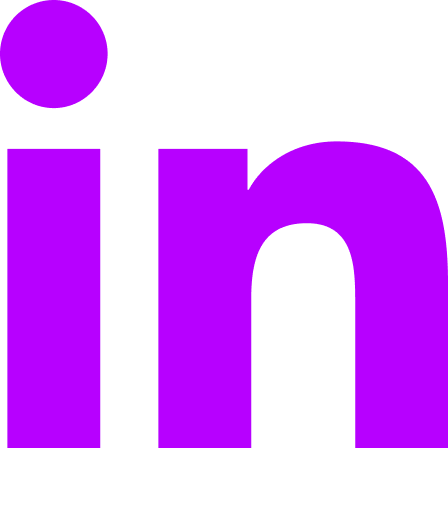What Are Intranet Portals?
An employee intranet portal is a secure, private website that serves as the central hub for an organization’s internal communication, collaboration, and knowledge management. It connects employees to the resources, tools, and information they need to work effectively. Unlike traditional intranets, which are often static, intranet portals are interactive, customizable, and designed to improve productivity by integrating with third-party applications.
Organizations use intranet portals to provide employees with company news, policy documents, shared workspaces, and collaborative tools, creating a unified digital workplace.
How Intranet Portals Work
An intranet portal functions as a central access point to essential business applications and data. Employees can log in to access company documents, internal messaging, calendars, and project management tools. Features like advanced search, role-based access, and workflow automation ensure that employees find what they need without unnecessary delays.
Modern intranet portals go beyond simple document storage. They integrate with business systems such as CRM, HR platforms, and collaboration tools like Microsoft Teams or Slack. This makes them an essential component of a connected workplace, streamlining processes and fostering engagement.
Key Components of an Intranet Portal
Content Management System (CMS)
An intranet platform with a built-in CMS allows administrators to create, edit, and distribute content such as company news, policies, and training materials. A well-structured CMS ensures information remains current and accessible.
Collaboration Tools
Intranet portals include forums, chat features, and shared workspaces that allow employees to collaborate in real-time. These tools reduce reliance on email and improve team coordination.
Search and Navigation
Intranet users benefit from an enterprise search feature that helps them find documents, policies, or colleagues quickly. Advanced filtering options and AI-powered recommendations further enhance the search experience.
Security and Access Control
Role-based permissions within a private network ensure that employees access only the information relevant to their job functions. This protects sensitive data while allowing for seamless collaboration.
Analytics and Insights
Dashboards and reporting tools track portal usage, engagement levels, and the effectiveness of content. Understanding how employees interact with the portal helps organizations refine their communication strategies.
Why Intranet Portals Matter
A well-designed intranet portal, often referred to as one of the many ‘portal solutions’, is more than just a document repository. It acts as the nerve center of an organization, bringing together employees, tools, and information in a single, accessible platform. Companies that implement intranet portals experience:
-
Improved communication across departments.
-
Enhanced collaboration between remote and in-office teams.
-
Faster decision-making due to easy access to critical data.
-
Increased employee engagement and retention.
Intranet portals reduce reliance on email and disconnected file storage solutions, streamlining workflows and reducing inefficiencies.
Benefits of Intranet Portals
Centralized Information
All company-related information, from HR policies to project updates, is stored in one centralized intranet site. Employees don’t have to waste time searching across multiple platforms.
Enhanced Collaboration
Integrated tools allow employees to work together in real-time, whether they are in the office or working remotely.
Secure Access to Data
With role-based access control, employees see only the information they are authorized to access, reducing security risks.
Improved Employee Engagement
Features like social feeds, recognition programs, and discussion forums create a more connected and engaged workforce.
Productivity Boost
By reducing time spent searching for information and streamlining communication, setting up a new intranet site can significantly increase workplace efficiency.
Challenges of Intranet Portals
High Implementation Costs
Setting up and maintaining an intranet portal requires investment in software, customization, and training.
Employee Adoption
Some employees may resist using a new platform, making training and onboarding essential for successful adoption.
Content Management
Outdated or irrelevant content can clutter the portal, reducing its effectiveness. A structured approach to content governance is necessary.
Integration Complexity
Ensuring seamless integration with existing business applications can be challenging, requiring careful planning and technical expertise as part of a successful intranet project.
Best Practices for Implementing an Intranet Portal
Define Clear Objectives
Before launching an intranet portal, organizations should outline specific goals, such as improving knowledge sharing or enhancing collaboration.
Focus on User Experience
A well-designed interface with intuitive navigation ensures employees use the platform effectively, even without requiring technical knowledge.
Encourage Employee Participation
Intranet portals succeed when employees actively engage with them. Leadership should promote usage through incentives and regular updates.
Provide Ongoing Training
Regular training sessions and onboarding materials help employees understand how to maximize the portal’s features.
Monitor and Optimize
Regularly analyzing usage metrics helps organizations refine the portal and address any pain points.
Intranet Software and Solutions
Choosing the Right Platform
Selecting the right intranet software solution is crucial for aligning with your company’s strategy and achieving your business goals. The ideal platform should not only meet the current needs of your employees but also be adaptable to future growth. Here are some key considerations to keep in mind:
-
Scalability: Opt for a platform that can grow with your organization. As your company expands, the intranet should be able to accommodate an increasing number of users and a larger volume of content without compromising performance.
-
Customization: Choose a solution that allows for extensive customization. This ensures that the intranet can be tailored to reflect your company’s brand and meet specific operational needs.
-
Integration: Ensure the platform integrates seamlessly with your existing tools and systems, such as Microsoft Office 365 or SharePoint. This integration is vital for creating a cohesive digital workplace where all tools work together harmoniously.
-
Security: Robust security measures are non-negotiable. The platform should protect sensitive information and ensure compliance with industry standards and regulations.
-
User Experience: Prioritize a solution that offers an intuitive interface and easy navigation. A user-friendly platform encourages adoption and maximizes productivity.
By carefully evaluating these factors, you can select an intranet software solution that not only meets the unique needs of your organization but also supports your overall business operations.
Designing an Effective Intranet Portal
User-Centered Approach
Creating an effective intranet portal requires a user-centered approach that prioritizes employee engagement and productivity. Here are some design principles to consider:
-
Simple Navigation: Ensure that the portal is easy to navigate with clear and concise menus and links. A straightforward navigation structure helps employees find the information they need quickly and efficiently.
-
Personalization: Allow employees to personalize their experience. Customizable dashboards and content tailored to individual roles and preferences can significantly enhance user satisfaction and engagement.
-
Search Functionality: Provide robust search functionality. An advanced search feature that includes filters and AI-powered recommendations makes it easy for employees to locate the information they need.
-
Mobile Accessibility: Ensure that the portal is accessible on mobile devices. Mobile accessibility allows employees to stay connected and productive, whether they are in the office or on the go.
-
Feedback Mechanisms: Incorporate feedback mechanisms such as surveys and discussion forums. These tools encourage employee engagement and provide valuable insights into how the portal can be improved.
By prioritizing user experience and incorporating these design principles, you can create an effective intranet portal that supports your employees and drives business success.
Internal Communications and Company News
Keeping Employees Informed
Effective internal communications and company news are critical components of a successful intranet portal. Keeping employees informed about company news, policies, and procedures is essential for engagement, productivity, and compliance. Here are some strategies for effective internal communications:
-
Regular Updates: Provide regular updates on company news, policies, and procedures. Consistent communication keeps employees informed and reduces the risk of misinformation.
-
Clear and Concise Language: Use clear and concise language, avoiding jargon and technical terms. This ensures that all employees, regardless of their role or background, can understand the information being communicated.
-
Multimedia Content: Incorporate multimedia content such as videos and images. Multimedia elements make communications more engaging and can help convey complex information more effectively.
-
Feedback Mechanisms: Encourage feedback and discussion using mechanisms such as surveys and discussion forums. These tools foster a two-way communication channel and help gauge employee sentiment.
-
Targeted Communications: Use targeted communications, such as departmental or team-specific news, to ensure that employees receive relevant information. Tailored messages are more likely to be read and acted upon.
By prioritizing internal communications and company news, you can keep your employees informed, engaged, and productive, driving business success and growth.
Related Concepts
Enterprise Search
Advanced search capabilities within intranet portals enhance knowledge management by allowing employees to quickly locate relevant content.
Employee Engagement Tools
Social features such as company news feeds, forums, and feedback mechanisms encourage participation and communication.
Knowledge Management
An intranet portal serves as a knowledge hub, organizing internal resources for easy access and reference.
Internal Communication Strategies
Intranet portals support leadership messaging, team collaboration, and corporate updates, ensuring transparency across the organization.
Real-World Examples
A Healthcare Provider’s Digital Workplace Transformation
A large healthcare organization implemented an intranet portal to centralize patient care guidelines, internal communications, and scheduling tools. The result was a 40% reduction in administrative overhead and improved employee satisfaction.
A Global Retailer’s Knowledge Hub
A multinational retailer adopted an intranet portal to connect employees across different locations. The system provided training materials, company news, and collaboration spaces, leading to improved customer service and higher engagement levels.
A Financial Firm’s Secure Document Sharing Solution
A financial services company integrated an intranet portal with its compliance tools, enabling employees to access policy documents securely while ensuring regulatory compliance.
Final Thoughts
Intranet portals are more than just internal websites—they are essential tools for modern organizations seeking to improve communication, collaboration, and employee engagement. When properly implemented, they serve as a centralized hub for knowledge, reducing inefficiencies and strengthening company culture. Investing in an intranet portal helps businesses create a more connected, productive, and informed workforce.







